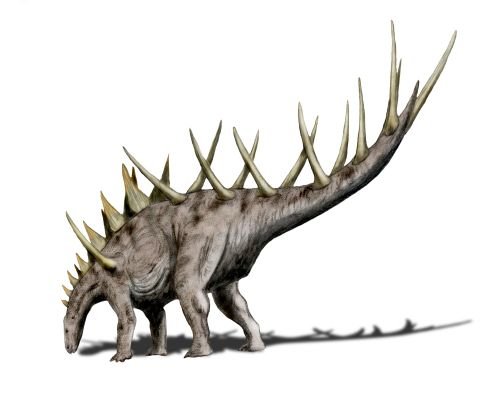Stegosauria: Dinosaurs With Spikes And Plates
Stegosauria is a group of herbivorous dinosaurs that belonged to the larger group of armored dinosaurs known as thyreophorans. They lived from the Middle Jurassic to the Early Cretaceous, approximately 169–100 million years ago. Stegosaurians were characterized by their distinctive double row of upright plates along their backs and pairs of long spikes on their tails. These plates and spikes likely served as defensive features or were used for display purposes. Stegosaurians had a relatively small skull with a beak-like mouth and small, leaf-shaped teeth.

As herbivores, members of the Stegosauria family primarily fed on plants. They were likely low-level browsers and grazers, consuming a variety of vegetation such as ferns, cycads, horsetails, and other types of ancient plants that existed during the Late Jurassic period.
Here are a few interesting members of the Stegosauria family:
Stegosaurus
Stegosaurus is one of the most well-known and iconic stegosaurians. It lived in North America during the Late Jurassic period. It was a large dinosaur, measuring up to 9 meters (30 feet) in length. Its back was adorned with large, bony plates and it possessed four sharp spikes at the end of its tail.

Stegosaurus © N. Tamura BY-SA 4
Kentrosaurus
Kentrosaurus lived in what is now Tanzania during the Late Jurassic period. It had a similar body plan to Stegosaurus but had two spikes on its shoulder and it was smaller, reaching lengths of around 5 meters (16 feet). Its body was covered in armor plates and it had long spikes from the middle of its back to its tail, making it a formidable-looking dinosaur.
Wuerhosaurus
Wuerhosaurus inhabited what is now China during the Early Cretaceous period, around 130 million years ago. It had two rows of plates along its back, which were taller and more upright compared to other stegosaurians. Its tail was armed with four pairs of long spikes and reached a length of 7 meters (or 23 ft).
Kentrosaurus

Kentrosaurus © N. Tamura BY-SA 4
Kentrosaurus lived in what is now Tanzania during the Late Jurassic period. It had a similar body plan to Stegosaurus but had two spikes on its shoulder and it was smaller, reaching lengths of around 5 meters (16 feet). Its body was covered in armor plates and it had long spikes from the middle of its back to its tail, making it a formidable-looking dinosaur.
Miragaia
Miragaia is a Stegosaurian that lived 150 million years ago in what is now Portugal during the Late Jurassic period. It had at least seventeen vertebrae, and therefore the longest neck of all stegosaurians. It reached a length of 6 meters (or 20ft).
Hesperosaurus
Hesperosaurus lived in what is now North America during the Late Jurassic period. It was a smaller stegosaurian compared to its relatives, measuring around 5 meters (16 feet) in length. It had long spikes on its tail and a row of bony plates running along its back.
Dacentrurus
Dacentrurus lived 150 million years ago in Europe during the Late Jurassic period. It had a robust body and large, flat plates along its back. Its tail carried long spikes. Dacentrurus was one of the earliest stegosaurians to be discovered and about 8–9 meters (26–30 ft) long.
Tuojiangosaurus
Tuojiangosaurus inhabited what is now China during the Late Jurassic period. It was with a length of 5 meters (or 16 feet) a medium-sized stegosaurian with the notable feature of having two pairs of long spines on its shoulders. The plates on its back were relatively small compared to other stegosaurians.
Lexovisaurus
Lexovisaurus inhabited what is now Europe, 165 million years ago, during the Late Jurassic period. It had a stocky body with relatively small plates on its back and spikes on its tail. Lexovisaurus represents one of the first Stegosaurians and reached a length of 6 meters (20 ft).
